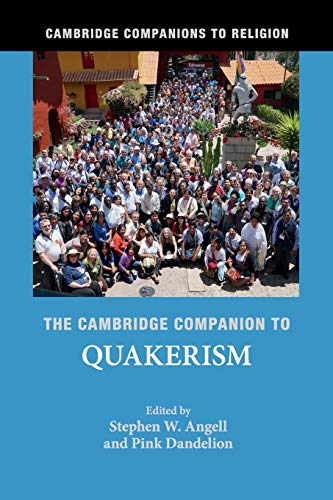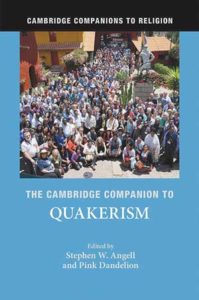김원기 '다음 생에는 태어나지 않는 게 최고'
tmSpo3nuso Jnulieyrhedc ·
예전에 이런 글을 썼었다고. 불교에 대해 아는 게 없으면서 깨작깨작.
------
'다음 생에는 태어나지 않는 게 최고'라는 얘기를 페친님의 글에서 읽은 김에.
물론 '윤회라는 게 존재한다고 하면/하더라도'라는 것을 전제로 한 얘기인데, 이 얘기는 모종의 이유로 내게는 매우 친숙한 편이다. 자주 언급하던 분이 계셨기 때문에. 그러나 이 말을 들을 때마다 생각하는 것이지만, 그게 그리 쉬운 게 아니다. 카르마를 소멸시키는 것도 카르마의 법칙에 따르기 때문에 어지간한 수행으로는 택도 없는 것이다.
물론 불교적 세계관을 조금만 들여다봐도 이게 얼마나 어렵고 드문 것인지 알 수 있다. 아시겠지만 불교의 세계는 시간적 스케일이 매우 크다. 어지간한 요소들을 고대 브라만 종교에서 받아들여서 공통적으로 갖고 있기 때문인데, 사실 그 정도의 스케일이 되면 아무리 낮은 확률의 사건이라도 충분히 많이 일어나게 되어 있다 (큰 수의 법칙). 그러므로 대충 인간이 탄생해 살아온 시기를 100만 년 정도의 '작은' 규모로 파악하는 진짜 역사말고 '겁(kalpa)' 단위로 시간을 파악하는 불교적 세계관에서라면 억겁의 세월쯤 지나면 부처가 무진장 탄생해야 정상이 아닐까.
깨달음을 통해 카르마를 소멸시키고 부처가 되는 것은 비가역적인 사건이다. 하지만 불교의 세계관에서 어지간한 것들은 다 순환적이다. 따라서 아무리 무한겁의 시간이 반복된다고 하더라도 탄생한 부처들은 누적이 되어야 하는 거다. 그런데 불교에서 말하는 부처의 숫자는 매우 적다. 그러므로 부처가 되겠다는 게 얼마나 허망한 소망인지 알 수가 있다. 사실 냉정하게 따져서 '누구나 불성을 갖고 있다'는 얘기에 속아서 수행 같은 걸 하는 게 바보다. 100까지의 숫자 중에서 6개 숫자를 뽑는 로또에 당첨되겠다고 전 재산 바치는 것보다 더 허망한 일이 될 수도 있다. 그러므로 적당하게 선업과 악업을 쌓는 '카르마 관리' 정도가 우리 중하근기들이 선택하기에 적절한 삶의 방식이다.
그런데 그렇게 말하면 왠지 허망하잖아. 부처 한 번 되보겠다는 꿈을 꿀 수 없다니. 그래서인지 인도에서 '스승'들이 만들어서 전해준다는 각종 '설화'를 보면 이런 현실을 도외시하고 허황된 꿈을 꾸도록 부추기는 내용들이 너무나 많다. 예를 들어, 이런 식이다.
비슈누가 시바랑 같이 인간세상에 내려와 '스승'인 척 거리에서 사람들에게 깨달음을 전해주고 있었다. 그런데 척보기에도 하찮고 비루해 보이는 거렁뱅이가 와서 물었다. "저 같은 것도 몇 번의 생을 거치면 깨달을 수 있는 희망이 있나요?" 그러자 비슈누가 "당연하지. 좀 오래 걸리겠지만 원칙적으로는 너도 할 수 있어. 희망을 버리지 마."라고 했다. 그러자 갑자기 이 거렁뱅이가 기쁨의 춤을 추기 시작하더니 그 순간 카르마를 소멸시키고 신의 세계로 넘어가 버렸다. 시바가 비슈누에게 물었다. "아무리 불쌍해 보여도, 그런 축복을 해주다니, 넘 한 거 아닌가요?" 비슈누가 대답했단다. "난 암것도 한 거 없어. 희망이 없지 않다는 말에 기쁨이 넘쳐 지 혼자 초월해버린 거라고." 그러자 시바가 오오 하고 감탄했다. 축캐는 따로 있었네.
불교만 이렇지도 않다. 초기 기독교 사막의 교부들도 이런 뻥카를 많이 쳤다. "원하기만 한다면 인간은 해가 떠서 질 때까지 신성의 크기에 도달할 수 있다." 물론 '얼마나' 원해야 하는지는 구체적으로 설명하진 않았다만. 그러니 이런 말에 속아 넘어간 사람들이 어떤 고생을 했을지 상상하지 말자. 눈물이 앞을 가리지 않나.
물론 이런 길고 장황한 이야기의 교훈은, 통계적으로 사고하자는 것이다. 부처가 되거나 '해가 뜨고 질 시간 동안 신성의 크기에 도달할' 확률은 극히 낮다. 그런 낮은 확률의 사건이 우리 생에 지구 어디에선가 일어나는 것을 목격하는 것조차도 기적인데 우리가 그렇게 되겠다고 마음 먹는 건 말도 안 된다.
결론 : 어차피 다음 생은 축생일 확률이 높습니다. 포기하세요. 그나마 축생을 거쳐야 다다음 생이 편해져.
.
.
.
PS
전생에 얼마나 해먹은 게 많아서 현생에 이 고생인가 나는.
그런데 그렇게 말하면 왠지 허망하잖아. 부처 한 번 되보겠다는 꿈을 꿀 수 없다니. 그래서인지 인도에서 '스승'들이 만들어서 전해준다는 각종 '설화'를 보면 이런 현실을 도외시하고 허황된 꿈을 꾸도록 부추기는 내용들이 너무나 많다. 예를 들어, 이런 식이다.
비슈누가 시바랑 같이 인간세상에 내려와 '스승'인 척 거리에서 사람들에게 깨달음을 전해주고 있었다. 그런데 척보기에도 하찮고 비루해 보이는 거렁뱅이가 와서 물었다. "저 같은 것도 몇 번의 생을 거치면 깨달을 수 있는 희망이 있나요?" 그러자 비슈누가 "당연하지. 좀 오래 걸리겠지만 원칙적으로는 너도 할 수 있어. 희망을 버리지 마."라고 했다. 그러자 갑자기 이 거렁뱅이가 기쁨의 춤을 추기 시작하더니 그 순간 카르마를 소멸시키고 신의 세계로 넘어가 버렸다. 시바가 비슈누에게 물었다. "아무리 불쌍해 보여도, 그런 축복을 해주다니, 넘 한 거 아닌가요?" 비슈누가 대답했단다. "난 암것도 한 거 없어. 희망이 없지 않다는 말에 기쁨이 넘쳐 지 혼자 초월해버린 거라고." 그러자 시바가 오오 하고 감탄했다. 축캐는 따로 있었네.
불교만 이렇지도 않다. 초기 기독교 사막의 교부들도 이런 뻥카를 많이 쳤다. "원하기만 한다면 인간은 해가 떠서 질 때까지 신성의 크기에 도달할 수 있다." 물론 '얼마나' 원해야 하는지는 구체적으로 설명하진 않았다만. 그러니 이런 말에 속아 넘어간 사람들이 어떤 고생을 했을지 상상하지 말자. 눈물이 앞을 가리지 않나.
물론 이런 길고 장황한 이야기의 교훈은, 통계적으로 사고하자는 것이다. 부처가 되거나 '해가 뜨고 질 시간 동안 신성의 크기에 도달할' 확률은 극히 낮다. 그런 낮은 확률의 사건이 우리 생에 지구 어디에선가 일어나는 것을 목격하는 것조차도 기적인데 우리가 그렇게 되겠다고 마음 먹는 건 말도 안 된다.
결론 : 어차피 다음 생은 축생일 확률이 높습니다. 포기하세요. 그나마 축생을 거쳐야 다다음 생이 편해져.
.
.
.
PS
전생에 얼마나 해먹은 게 많아서 현생에 이 고생인가 나는.


 안재구 전 경북대 교수는 남민전 사건과 구국전위 사건으로 두 차례나 무기징역을 선고받았으며, 석방 후에도 평생 통일운동을 위해 활동해왔다. 경향신문 자료사진
안재구 전 경북대 교수는 남민전 사건과 구국전위 사건으로 두 차례나 무기징역을 선고받았으며, 석방 후에도 평생 통일운동을 위해 활동해왔다. 경향신문 자료사진























